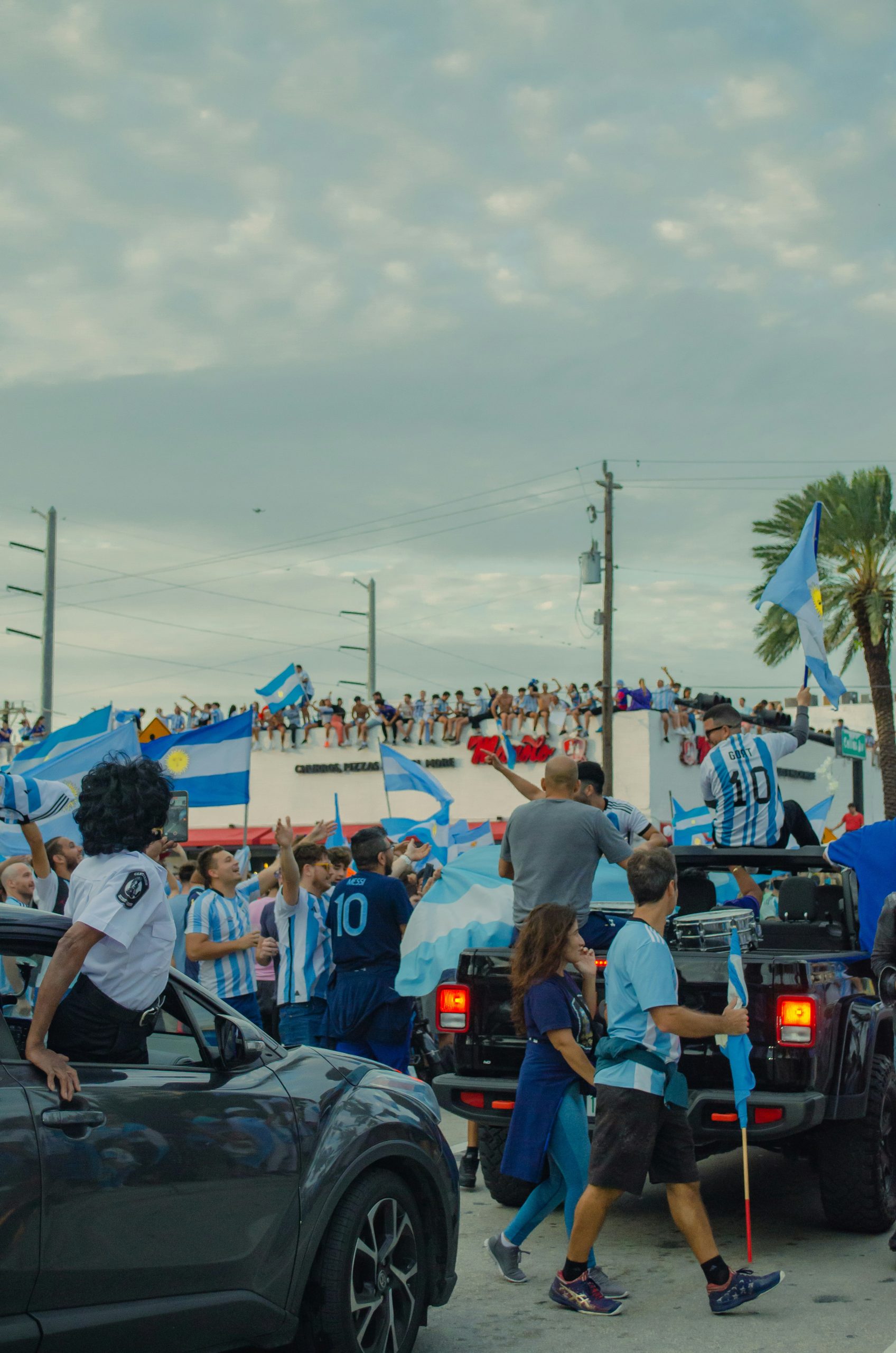Legends of Argentine Football – Then vs Now: A Journey Through Generations of Greatness
You know what gets me every time I watch old footage of Argentine football? It’s not just the skill—though honestly, that’s mesmerizing enough. It’s the raw passion, the way these players seemed to carry the entire nation’s hopes on their shoulders. Having spent countless hours analyzing both historical matches and contemporary games, I’ve become fascinated by how Argentine football has evolved while somehow maintaining that distinctive fire that makes it so captivating.
The question that sparked this deep dive came during a heated discussion with fellow football enthusiasts last month: Are today’s Argentine stars truly measuring up to the legends of yesteryear? It’s a debate that divides fans across generations, and honestly, I found myself going back and forth on this more than I’d like to admit.
What struck me most during my research was discovering how each era of Argentine football reflects the country’s broader cultural and social evolution. The players of the 1970s and 1980s emerged from a different Argentina entirely—one grappling with political upheaval, economic challenges, and a fierce desire to prove itself on the world stage. Meanwhile, today’s stars have grown up in a globalized football environment, with access to advanced training methods and international exposure from young ages.
The Golden Era Icons: When Football Was Poetry
Let me paint you a picture of what Argentine football looked like during its golden era. Picture this: it’s 1986, Mexico City, and Diego Maradona is weaving through England’s defense like he’s dancing to music only he can hear. That moment—and honestly, so many others like it—defined what we now consider the classical Argentine style.
The legends of this era weren’t just exceptional players; they were artists who happened to express themselves through football. Diego Maradona, obviously, stands as the towering figure1. But here’s what fascinates me about that generation: they had this incredible ability to elevate their performance when it mattered most. Mario Kempes in 1978, Maradona in 1986—these weren’t just good players having good tournaments. They were transcendent figures carrying their nation to glory through sheer force of will.
What I find particularly intriguing is how these players developed their skills. Most came from humble backgrounds, learning football in the streets and small clubs where creativity was valued over rigid tactical discipline. Gabriel Batistuta, for instance, developed that legendary left foot while playing on dusty pitches in Reconquista2. There’s something romantically authentic about that development path that you don’t see as much today.
The technical abilities of these golden era players were simply extraordinary, but what set them apart was their mental approach to the game. Take Juan Román Riquelme—and I know he bridges different eras, but his style was pure classical Argentine football. The man could thread a pass through spaces that shouldn’t exist, and he did it with this almost arrogant confidence that said, “I see the game differently than everyone else.”
Key Characteristics of Golden Era Argentine Players
- Exceptional individual technical skills developed through street football
- Ability to perform under immense pressure and national expectation
- Creative problem-solving that often defied conventional tactical wisdom
- Strong emotional connection to representing Argentina
But here’s where I want to be completely honest—nostalgia has a way of making everything seem better than it actually was. While researching this piece, I rewatched several complete matches from the 1980s and 1990s, not just highlight reels. The pace was different, the physical demands were different, and frankly, some of what we remember as “pure football artistry” was also a product of less sophisticated defensive systems.
Modern Argentine Superstars: Evolution in Excellence
Now, let’s talk about the current generation, and honestly, where do you even start with Lionel Messi? I’ve been watching him play for over fifteen years, and I still find myself shaking my head in disbelief at things he does on the pitch. The 2022 World Cup victory in Qatar wasn’t just a personal triumph for Messi—it felt like validation for an entire generation of Argentine players who had been carrying the weight of unfulfilled expectations3.
What’s fascinating about modern Argentine players is how they’ve adapted to contemporary football while maintaining those essential Argentine characteristics. Ángel Di María, for instance, combines that classical Argentine flair with the physical and tactical demands of modern European football. His performance in the 2022 World Cup final reminded everyone why experience and clutch gene matter just as much as raw talent.
| Player | Era | World Cups | Key Strength |
|---|---|---|---|
| Diego Maradona | 1980s-1990s | 1986 Winner | Individual Brilliance |
| Lionel Messi | 2000s-2020s | 2022 Winner | Consistent Excellence |
| Gabriel Batistuta | 1990s-2000s | None Won | Clinical Finishing |
| Ángel Di María | 2010s-2020s | 2022 Winner | Big Game Performer |
The current generation also includes players like Lautaro Martínez and Julián Álvarez, who represent this interesting blend of traditional Argentine technique with modern tactical intelligence. Watching Álvarez adapt from River Plate to Manchester City while maintaining his goal-scoring instincts has been genuinely impressive4.
What really gets me excited about today’s Argentine players is their mental resilience. After years of near-misses and heartbreaking defeats, this generation finally broke through. The 2021 Copa América victory was crucial—it wasn’t just about ending a trophy drought, but about this group of players learning how to win together when it mattered most.

Tactical Evolution and Playing Styles: Adapting While Preserving Identity
Here’s where things get really interesting from a tactical perspective. The Argentina of Maradona’s era played a very different style of football compared to Scaloni’s 2022 World Cup winners, yet both teams felt unmistakably Argentine. It’s like listening to different genres of music from the same culture—the rhythm and soul remain constant even as the instruments and arrangements evolve.
Back in the golden era, Argentine teams often relied heavily on individual brilliance to solve tactical problems. Carlos Bilardo’s 1986 team, for instance, was built around maximizing Maradona’s impact while providing defensive stability. It was effective, but it put enormous pressure on key individuals to perform when it mattered most.
Today’s Argentine team under Scaloni represents something quite different—and frankly, more sustainable. They’ve developed this fascinating ability to switch between different tactical approaches within the same match. Against Netherlands in the 2022 World Cup quarterfinal, they showed they could play direct football when needed, then shift to possession-based control when the situation demanded it5.
What I find most compelling about this evolution is how modern Argentine players have embraced tactical flexibility without losing their essential characteristics. Rodrigo De Paul, for example, might not have the pure technical brilliance of a Riquelme, but his work rate and tactical intelligence allow him to contribute in ways that suit contemporary football perfectly.
- Golden Era (1978-1990): Individual genius within simpler tactical frameworks
- Transition Period (1990-2010): Struggling to adapt traditional style to modern demands
- Current Era (2010-present): Successfully blending tradition with tactical sophistication
Global Impact and Legacy: How Argentine Football Shaped the World
The influence of Argentine football extends far beyond the players themselves—it’s fundamentally changed how we think about the beautiful game. When I watch young players anywhere in the world attempting that Maradona-style dribble or trying to bend a free kick like Messi, I’m seeing the global impact of Argentine football philosophy in action.
What’s particularly fascinating is how different eras of Argentine football have influenced different aspects of the global game. The 1980s generation showed the world that individual brilliance could still decide major tournaments. The 2000s players demonstrated how to maintain technical excellence while adapting to increasingly physical European leagues. And the current generation has proven that collective intelligence and individual genius can coexist beautifully6.
Argentine Football’s Global Influence
From youth academies adopting Argentine-style technical training to professional teams incorporating the “false 9” position that Messi popularized, Argentine football innovations have spread worldwide. The country’s emphasis on creativity and individual expression has influenced coaching philosophies across South America, Europe, and beyond.
The coaching influence is equally significant. Argentine managers like Marcelo Bielsa, Diego Simeone, and Mauricio Pochettino have taken their football philosophy global, each adapting core Argentine principles to different contexts and achieving remarkable success. Bielsa’s influence on modern pressing systems, for instance, can be traced directly back to his Argentine football education7.
The Next Generation: Building on Legendary Foundations
Looking ahead, I’m genuinely excited about Argentina’s football future. The pipeline of young talent coming through is impressive, and what gives me confidence is how these players are developing with both the technical foundation that defines Argentine football and the tactical awareness that modern football demands.
Players like Enzo Fernández have already shown they can perform at the highest level while maintaining that distinctive Argentine style. His performance in the 2022 World Cup, particularly in the final, demonstrated the kind of composure and technical ability that bridges generations beautifully8.
What’s interesting about this upcoming generation is their global perspective. Unlike previous eras where players typically moved to Europe later in their careers, today’s Argentine prospects are often integrated into top European clubs from their teenage years. This early exposure to different tactical systems and playing styles could produce players who are even more adaptable than their predecessors.
The eternal question—then versus now—doesn’t really have a definitive answer, and honestly, that’s what makes it so compelling to discuss. What I can say with confidence is that each era of Argentine football has contributed something unique to the sport’s evolution. The golden era gave us pure artistry and individual genius. The modern era has shown us how to blend that creativity with tactical sophistication and mental resilience.
Perhaps the most beautiful thing about Argentine football is that it continues to evolve while maintaining its essential soul. Whether it’s Maradona’s Hand of God or Messi’s extra-time goal against the Netherlands, these moments transcend mere football—they become part of cultural memory, passed down through generations of fans who understand that some things are bigger than just sport.
Final Thoughts
The legends of Argentine football, whether from the 1980s or 2020s, share something timeless: the ability to make the impossible seem inevitable. As we look toward the future, that quality ensures Argentine football will continue producing players who don’t just play the game—they transform it.
References



